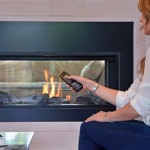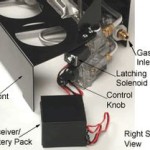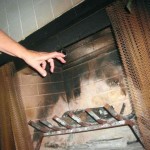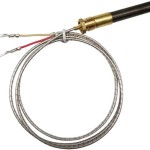Tiling Around a Fireplace: A Guide to Enhancing Your Hearth
A fireplace is the centerpiece of many homes, offering warmth, ambiance, and a focal point for gatherings. Enhancing the aesthetic appeal of this space can significantly impact the overall look and feel of the room. Tiling around a fireplace is a popular choice, offering a durable, stylish, and versatile solution that can complement various design aesthetics. This article will guide you through the process of tiling around a fireplace, covering key considerations, materials, and techniques.
Choosing the Right Tile
The first step in tiling around a fireplace is selecting the right tiles. The type of tile chosen should complement the existing décor, style, and construction of the fireplace. Here are some popular choices:
- Ceramic tiles are durable, affordable, and come in various colors, patterns, and finishes. They are a suitable option for both traditional and modern fireplaces.
- Porcelain tiles are known for their exceptional durability, water resistance, and stain resistance. They often feature a more polished look than ceramic tiles, making them ideal for contemporary settings.
- Natural stone tiles, such as marble, granite, or slate, offer a luxurious and timeless appeal. Their unique patterns and textures add character and warmth to a fireplace.
- Glass tiles offer a modern and sleek aesthetic, reflecting light and creating visual interest. They are available in various colors and finishes, allowing for creative customization.
Beyond aesthetic preferences, consider the fireplace's location and use. For fireplaces exposed to high temperatures or moisture, choose heat-resistant and water-resistant tiles, such as porcelain or natural stone. If using a wood-burning fireplace, ensure the tiles are rated for high temperatures to withstand the heat from flames.
Preparing the Fireplace for Tiling
A successful tiling project begins with proper preparation. This involves ensuring the surface of the fireplace is clean, smooth, and ready to accept the tiles. Follow these steps:
- Clean the existing surface: Remove any loose debris, dust, paint, or old mortar. Use a scraper, wire brush, or paint remover as needed. Ensure the surface is free of any residues that might hinder the adhesion of the tile mortar.
- Repair any damage: Fill cracks or holes with patching compound or mortar. Allow it to dry completely before proceeding. Ensure the surface is level and smooth to prevent uneven tile installation.
- Apply a bonding agent: To enhance adhesion, apply a bonding agent to the fireplace surface. This will create a better grip for the tile mortar. Allow the bonding agent to dry according to the manufacturer's instructions.
- Install the backer board: If the fireplace is made of drywall, install a backer board (usually cement board) to provide a sturdy and moisture-resistant substrate for the tiles. Use construction adhesive and screws to secure the backer board to the drywall.
Tiling Techniques and Installation
Once the fireplace surface is prepared, you can begin the tiling process. This involves applying tile mortar, setting the tiles, and grouting the joints. Here's a step-by-step guide:
- Apply tile mortar: Using a notched trowel, apply a thin layer of tile mortar to the prepared surface. The size of the notch on the trowel will depend on the size of the tiles being used.
- Set the tiles: Carefully position the tiles on the mortar bed, ensuring they are level and aligned. Use tile spacers to maintain consistent grout lines between the tiles. Tap the tiles lightly with a rubber mallet to ensure they are firmly set into the mortar.
- Clean the grout lines: After setting the tiles, use a damp sponge to clean the excess mortar from the grout lines. Allow the mortar to cure completely before moving on to the next step.
- Apply grout: Once the mortar has cured, apply grout to the grout lines between the tiles. Use a grout float to spread the grout evenly and fill the gaps. Wipe away excess grout with a damp sponge before it sets.
- Seal the grout: After the grout has set, use a sealant to protect it from stains and moisture. This will help maintain the appearance of the grout and prevent the growth of mildew or mold.
It is recommended to consult with a professional tile installer, especially for complex designs or if you are unfamiliar with tiling techniques. A professional can ensure the tiles are installed correctly, preventing any potential issues or damage to the fireplace.

How To Tile A Fireplace My Uncommon Slice Of Suburbia

How To Tile A Fireplace Even If It S Brick The Handyman Daughter
/102661017-6a23c040b71843379188b96b21ac1a08.jpg?strip=all)
How To Tile A Fireplace
Heat Resistant Tiles Can You Use Around A Wood Burner British Ceramic Tile

Diy Projects Tiling A Fireplace Like Pro Rubi Blog Usa

Cement Tile Around A Fireplace Is Always Great Idea Interiordesign Sldesignernetwork Cementtile Firepl Home Design Remodel

Remodeling A Fireplace With Tile

110 Diy Fireplace Makeover How To Paint Tile Jessica Welling Interiors

Fireplace Tiles Classique Floors Tile Portland Or

Fireplaces Pasadena Craftsman Tile
Related Posts








